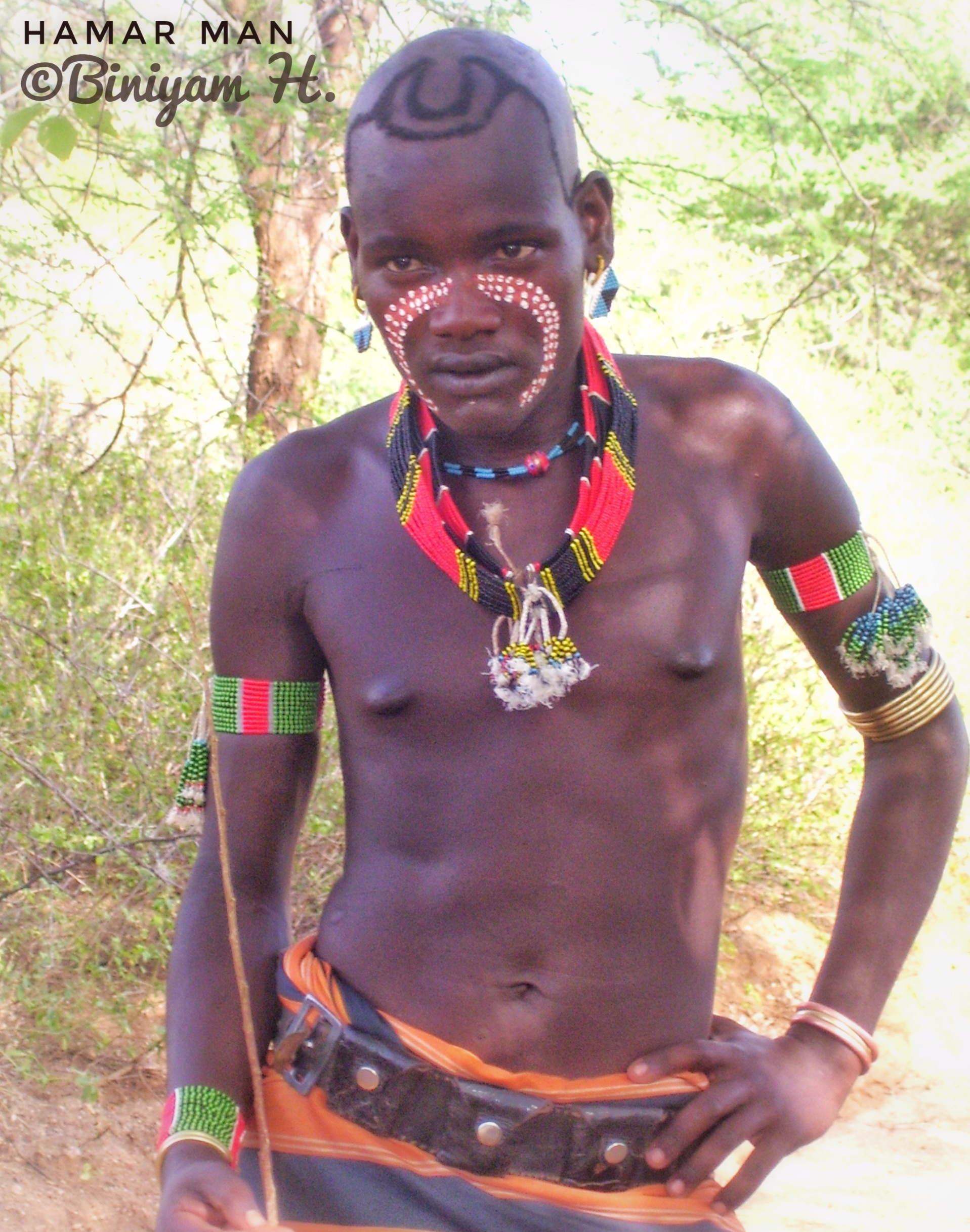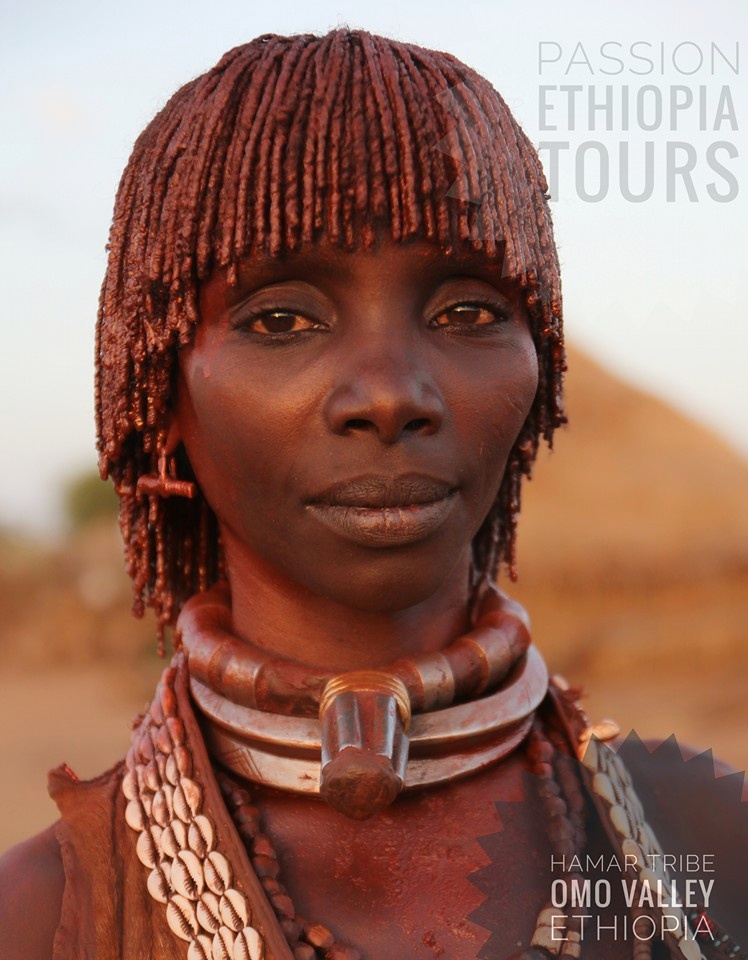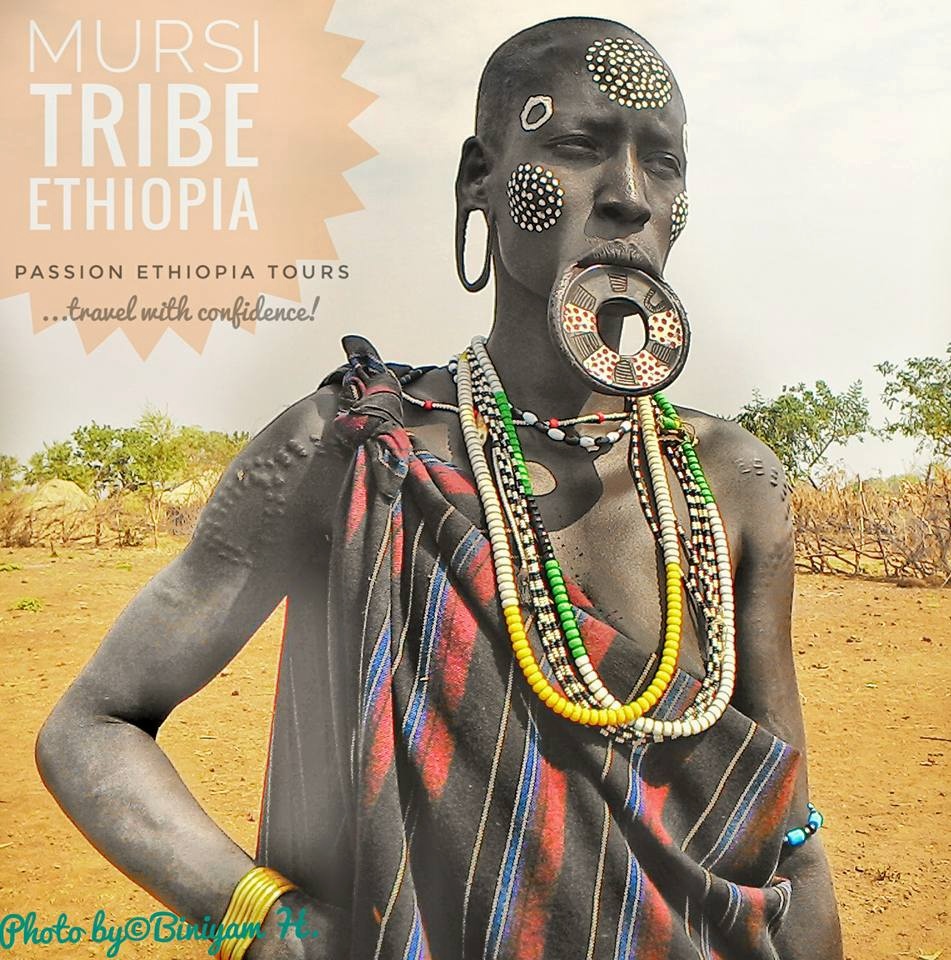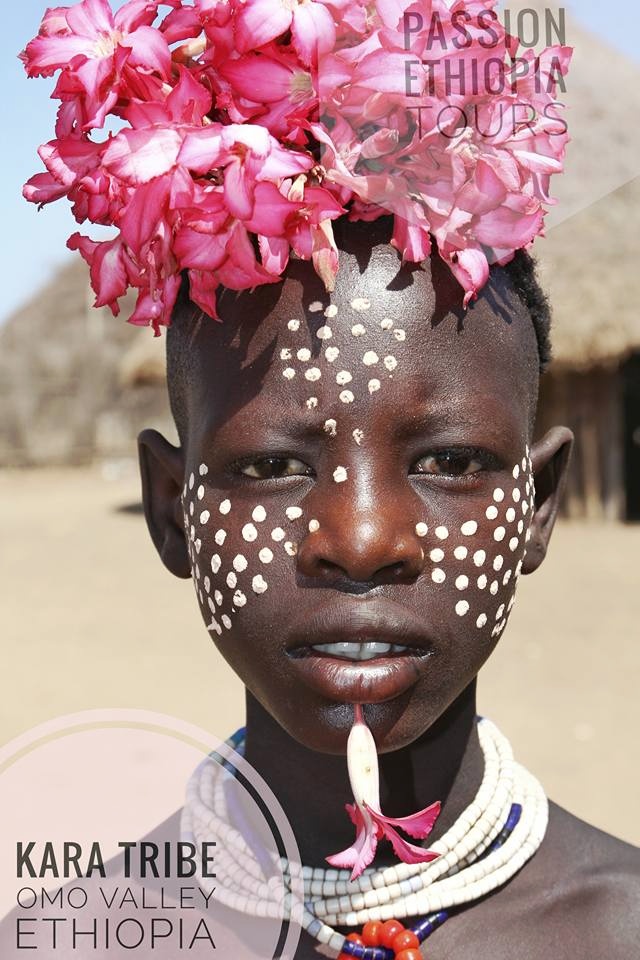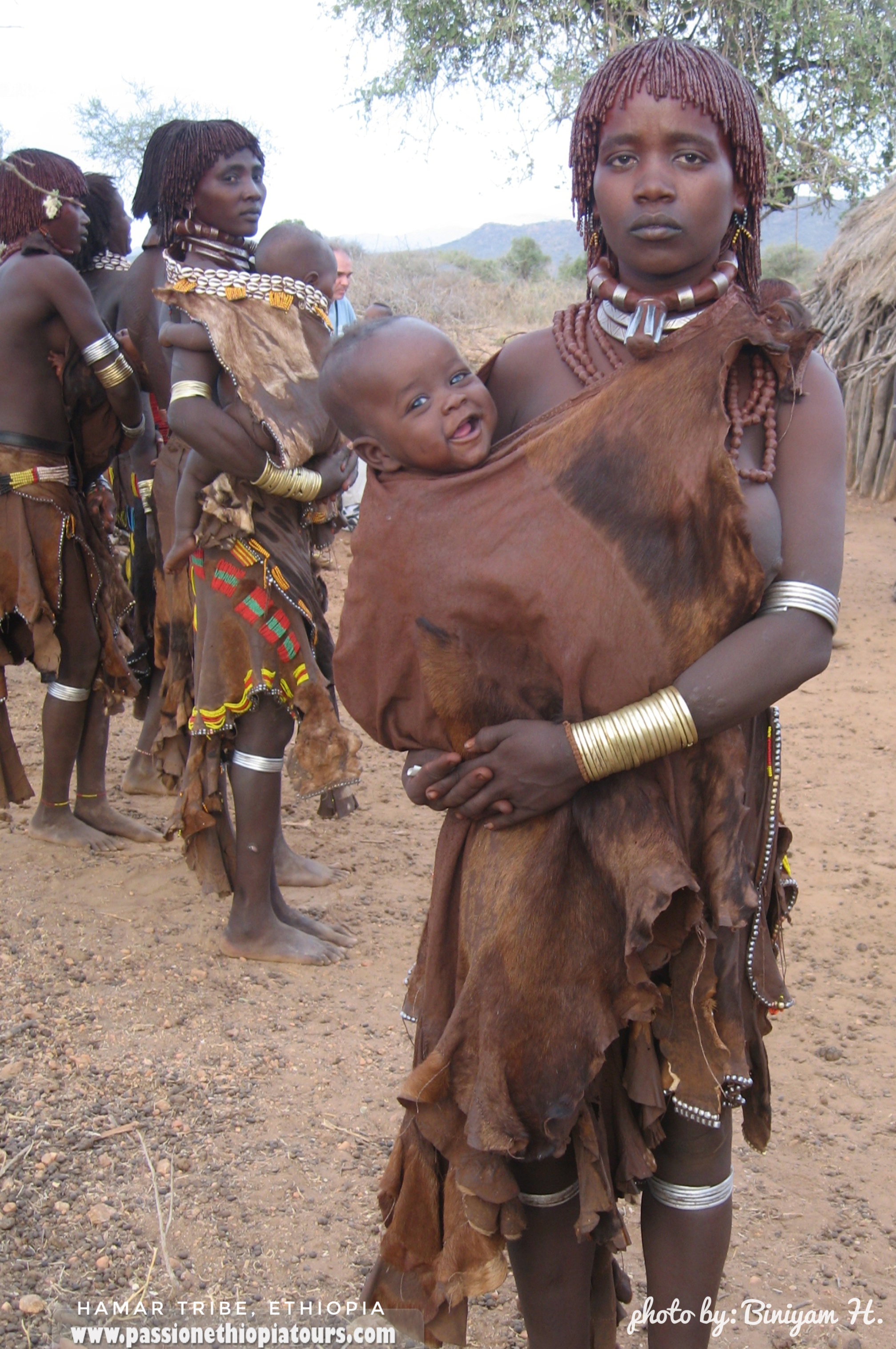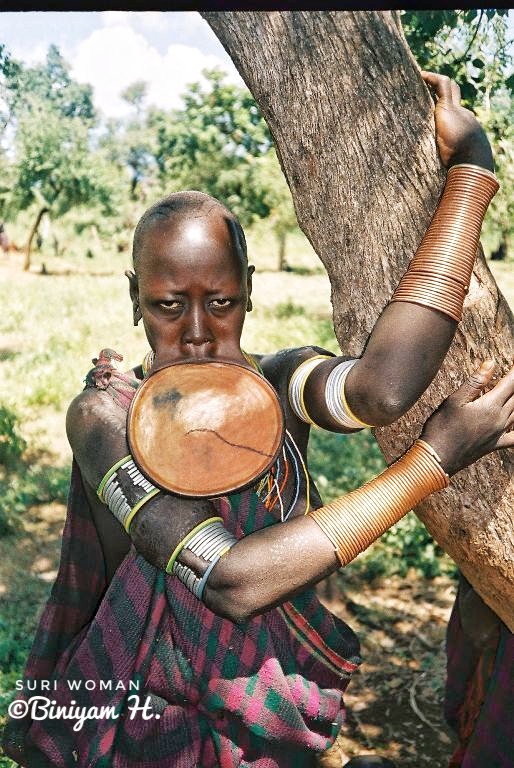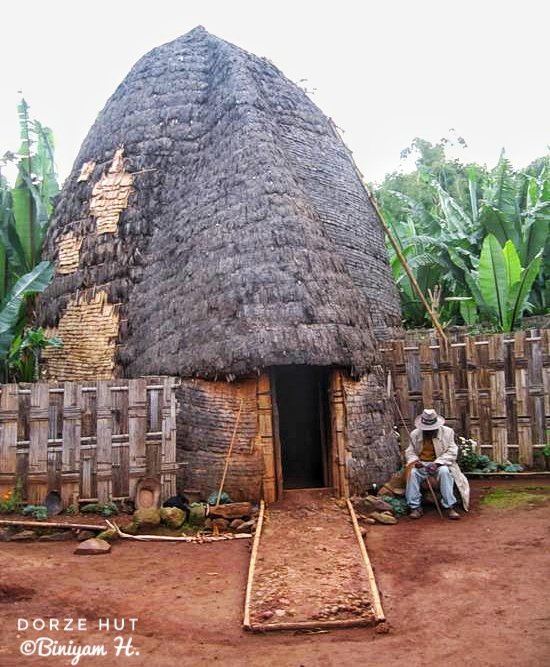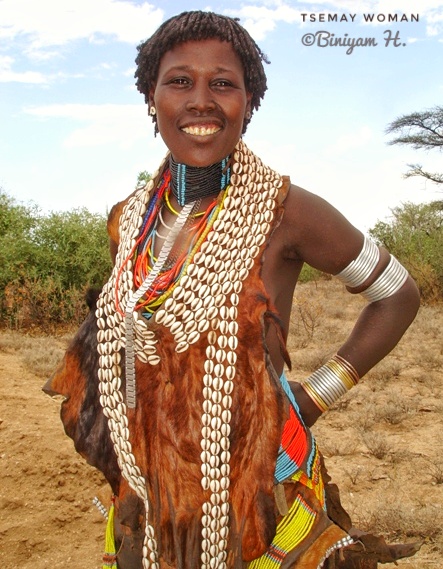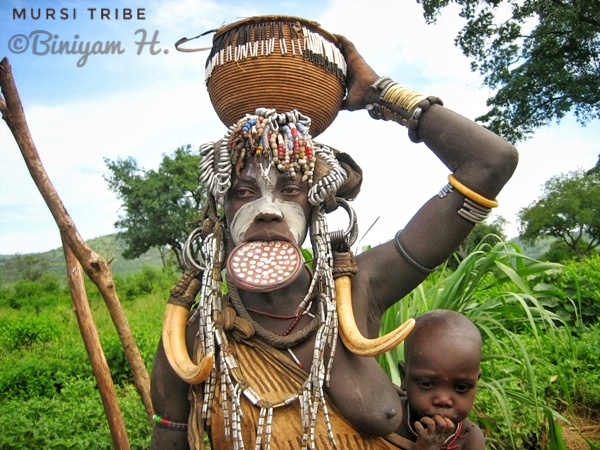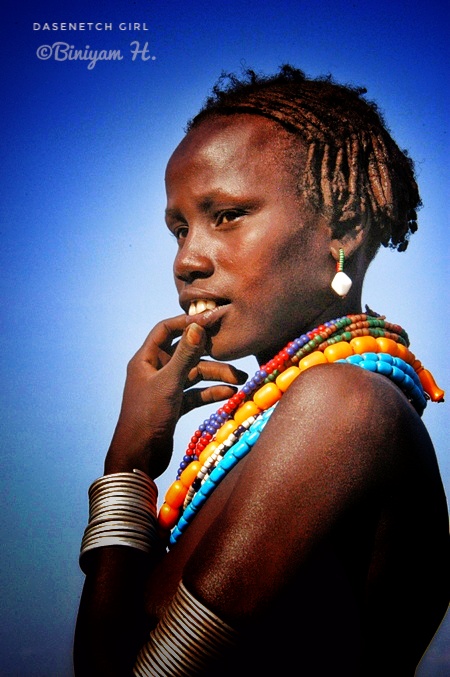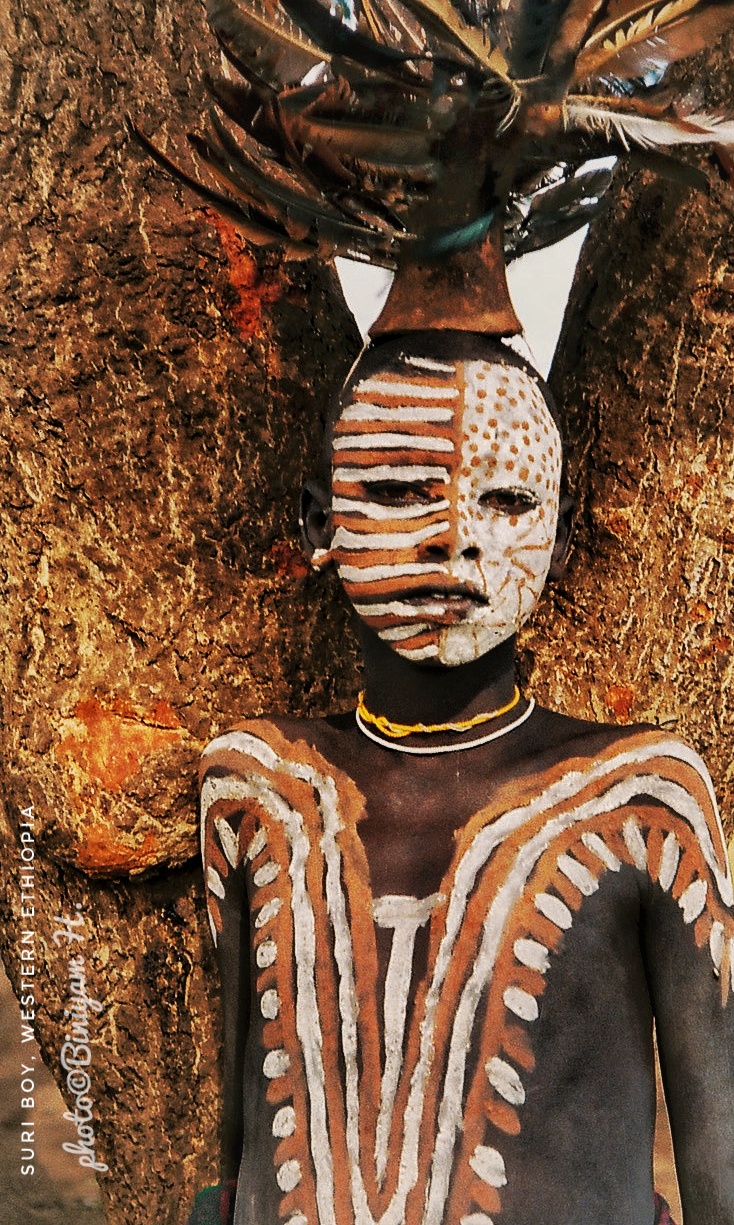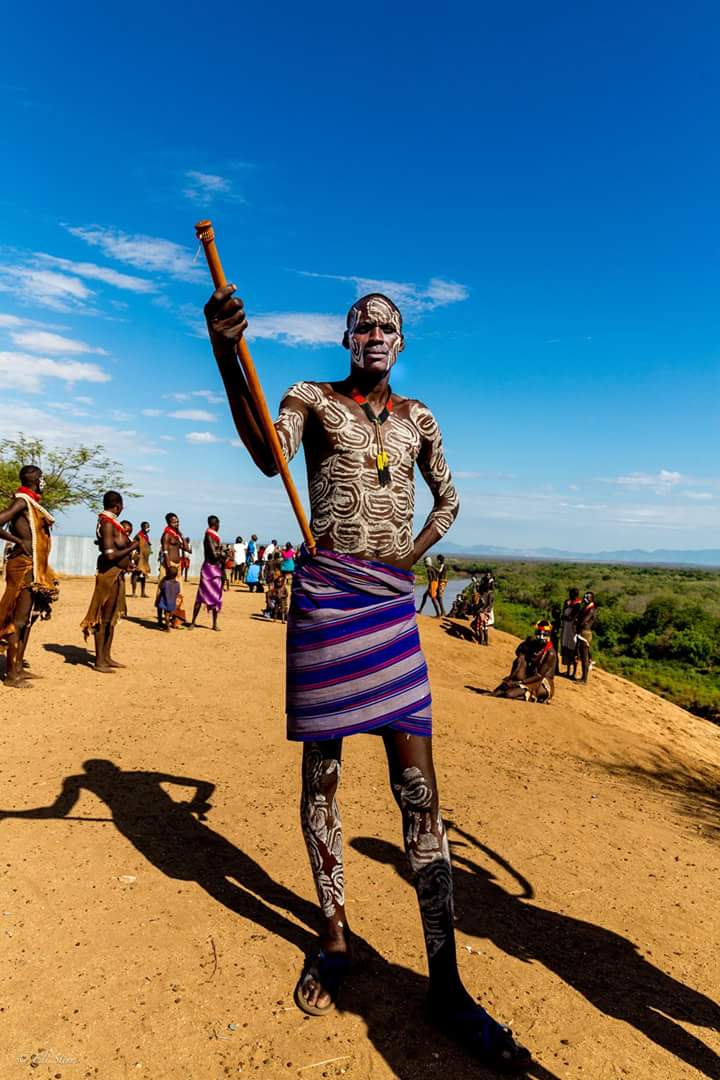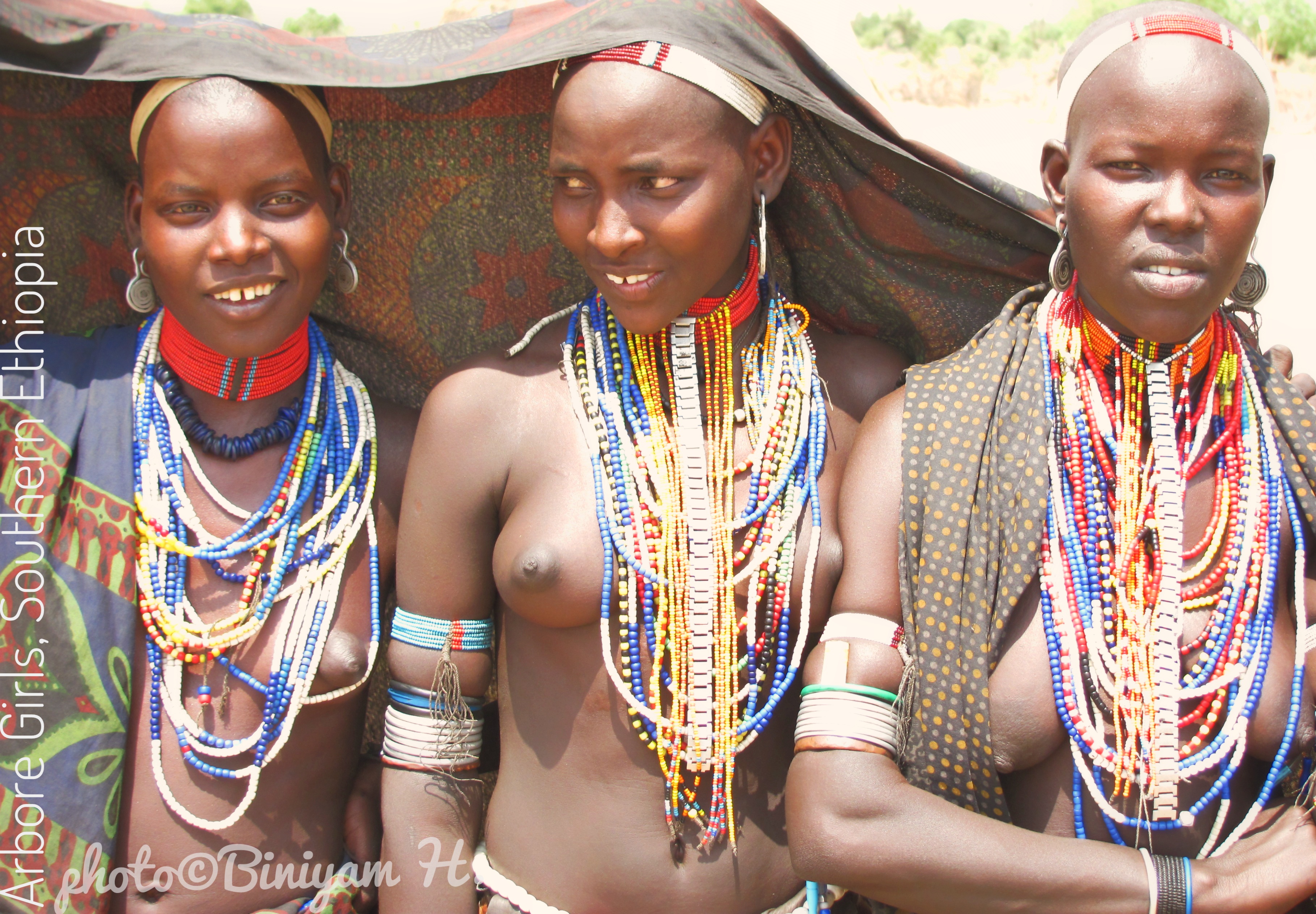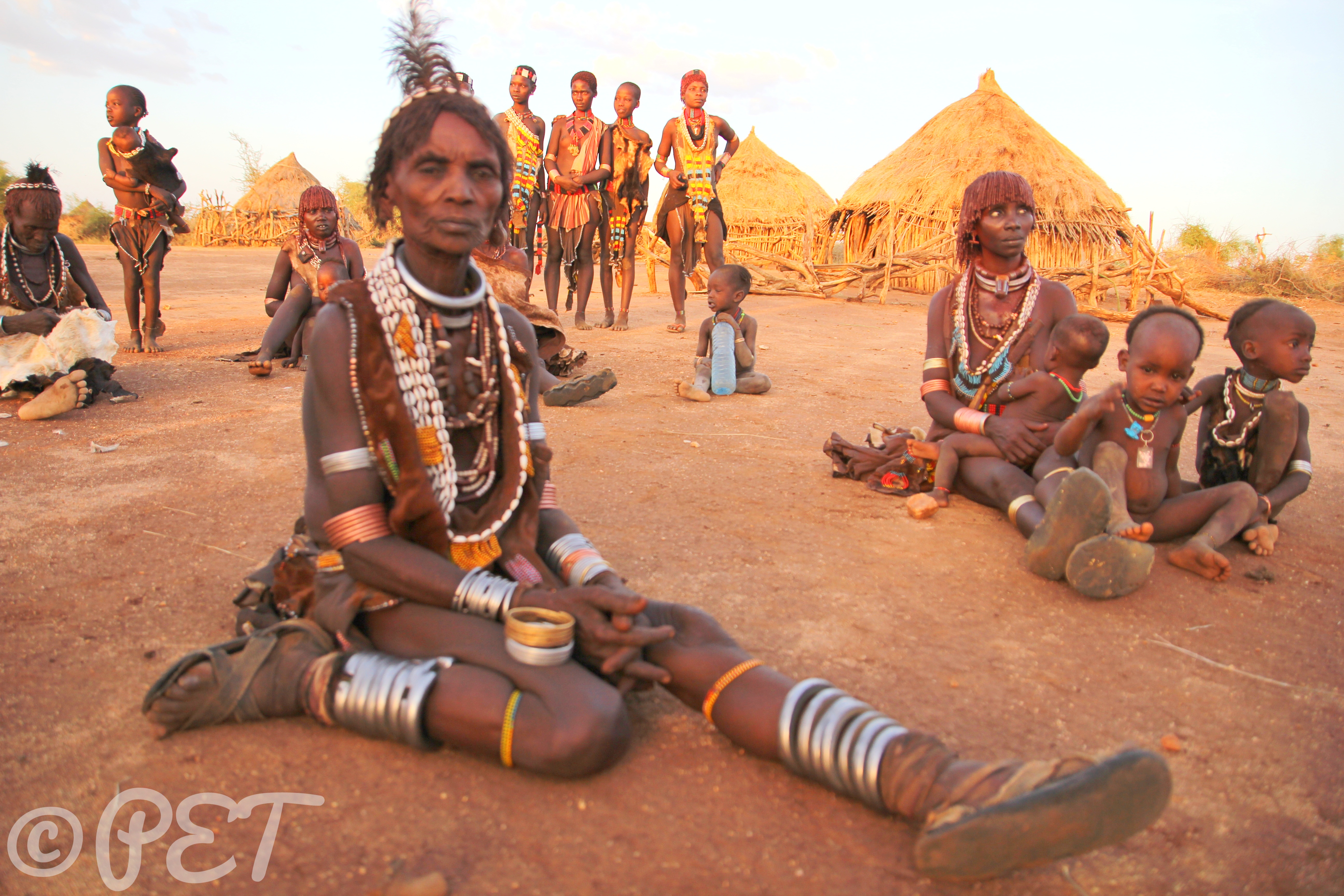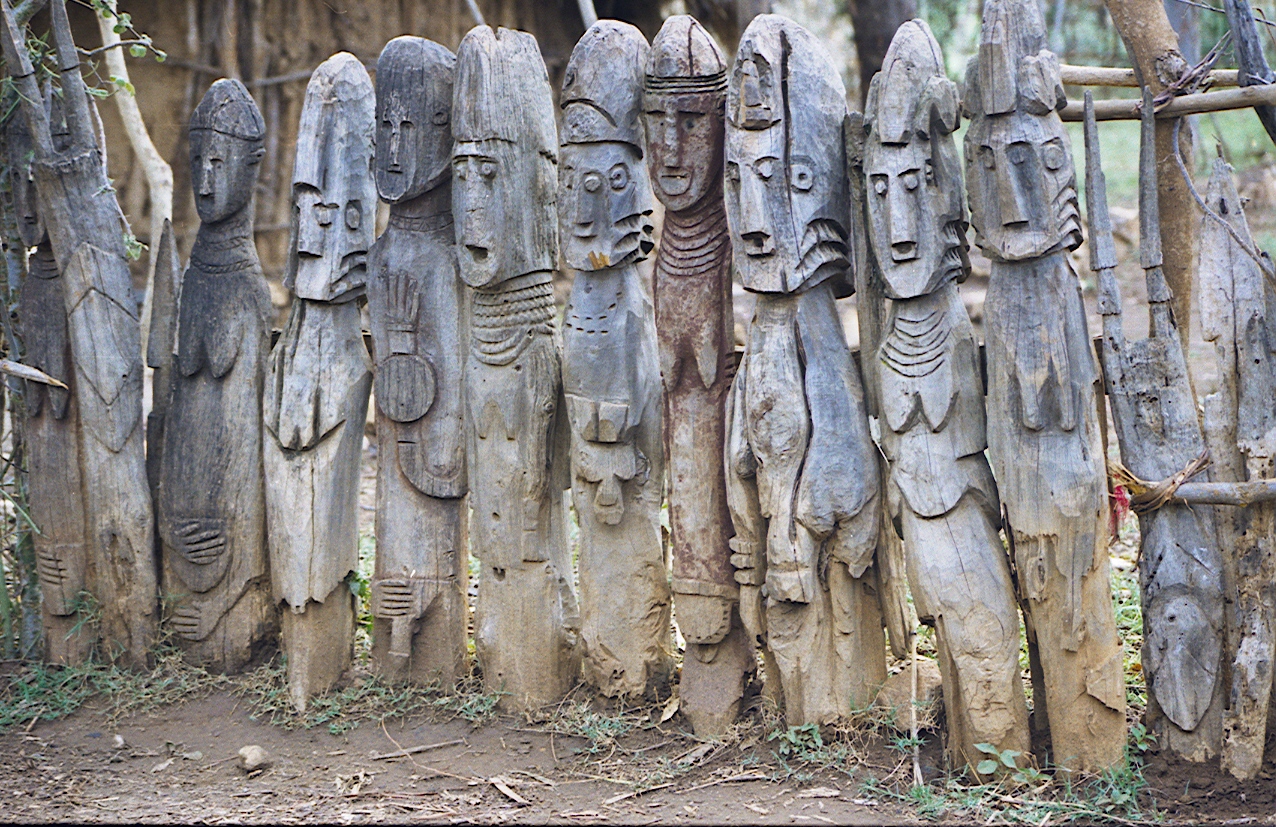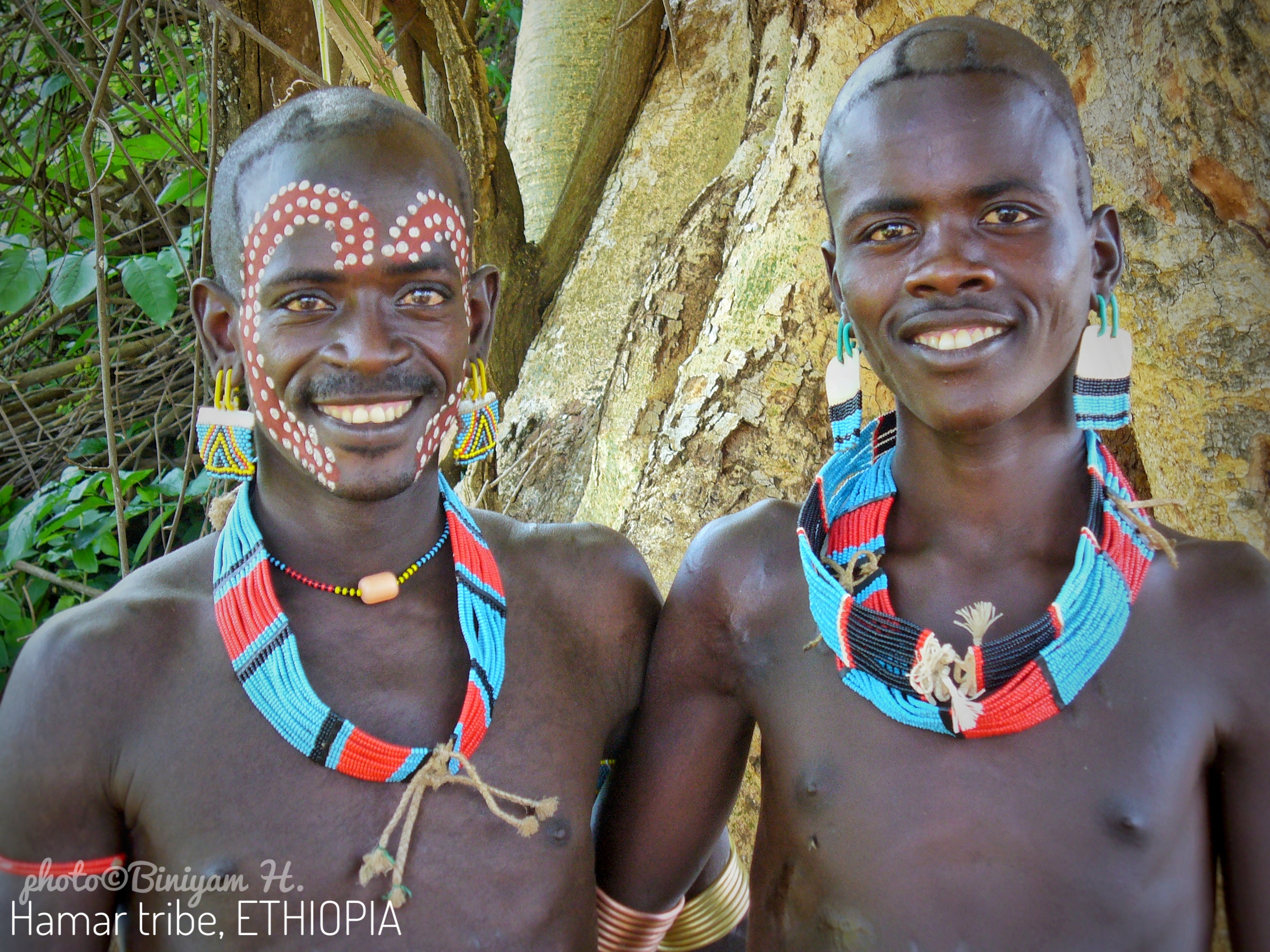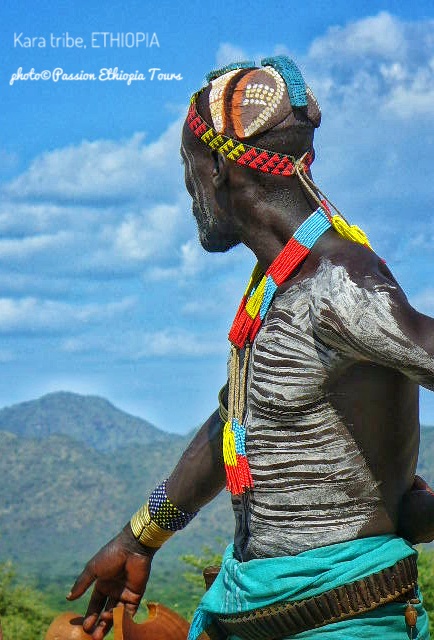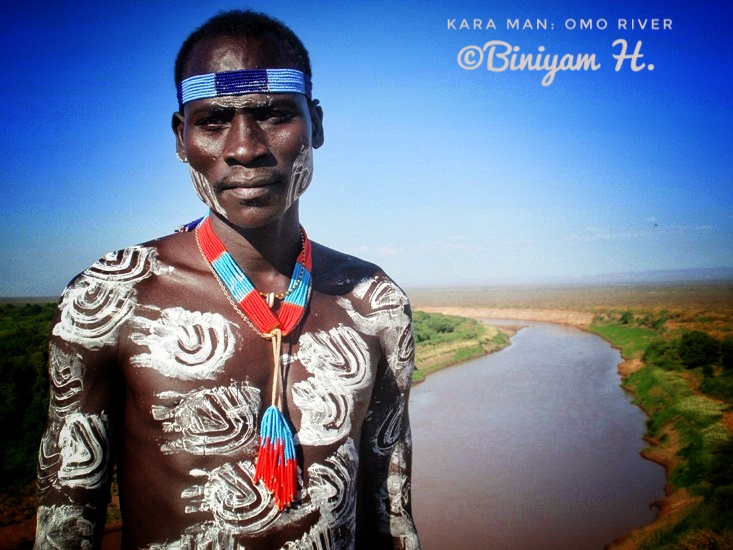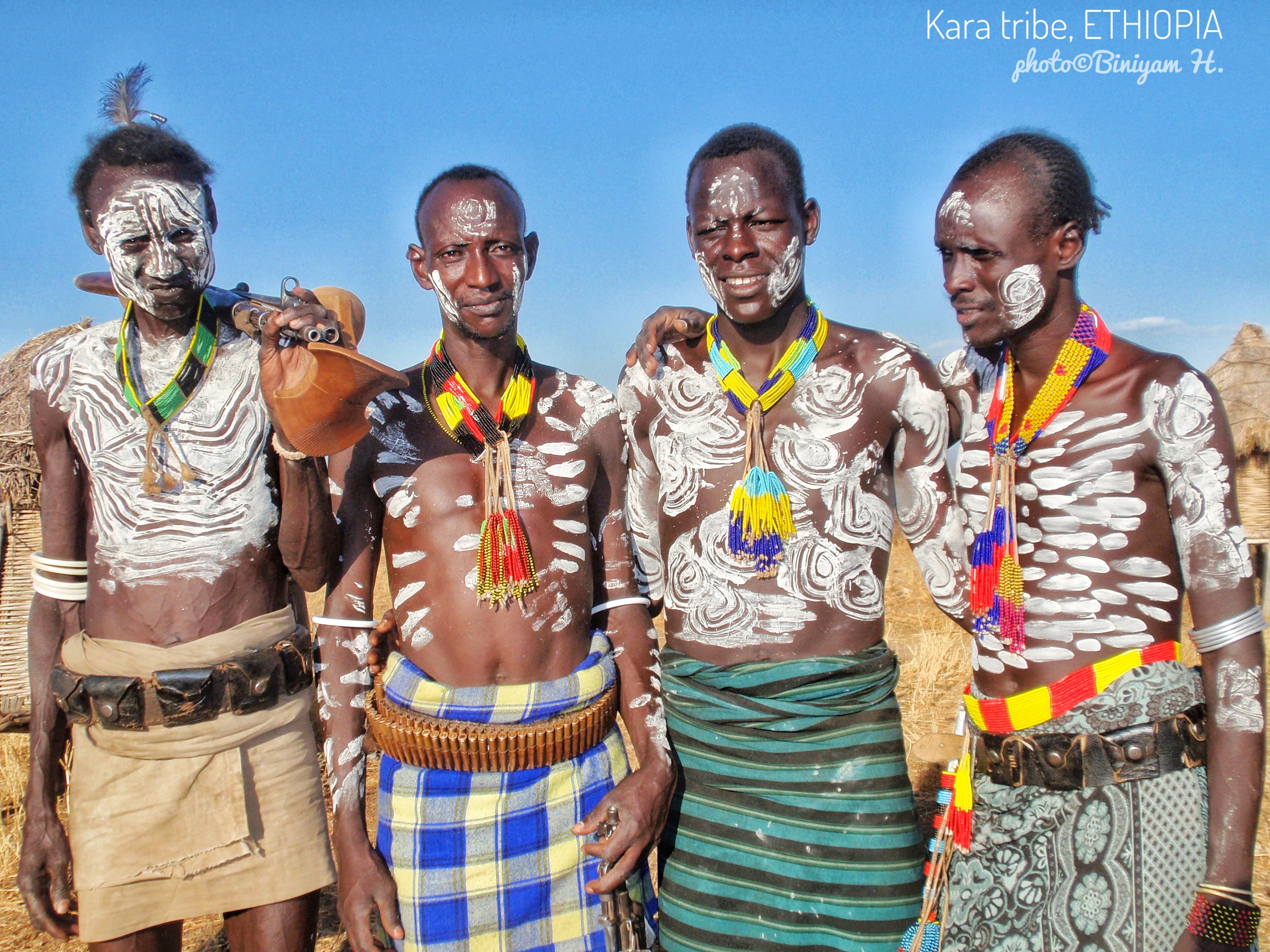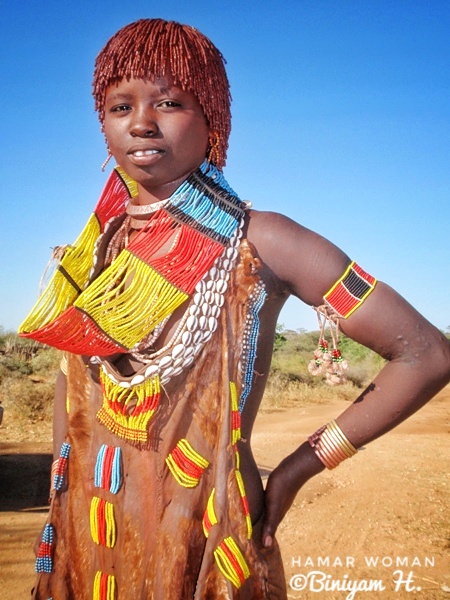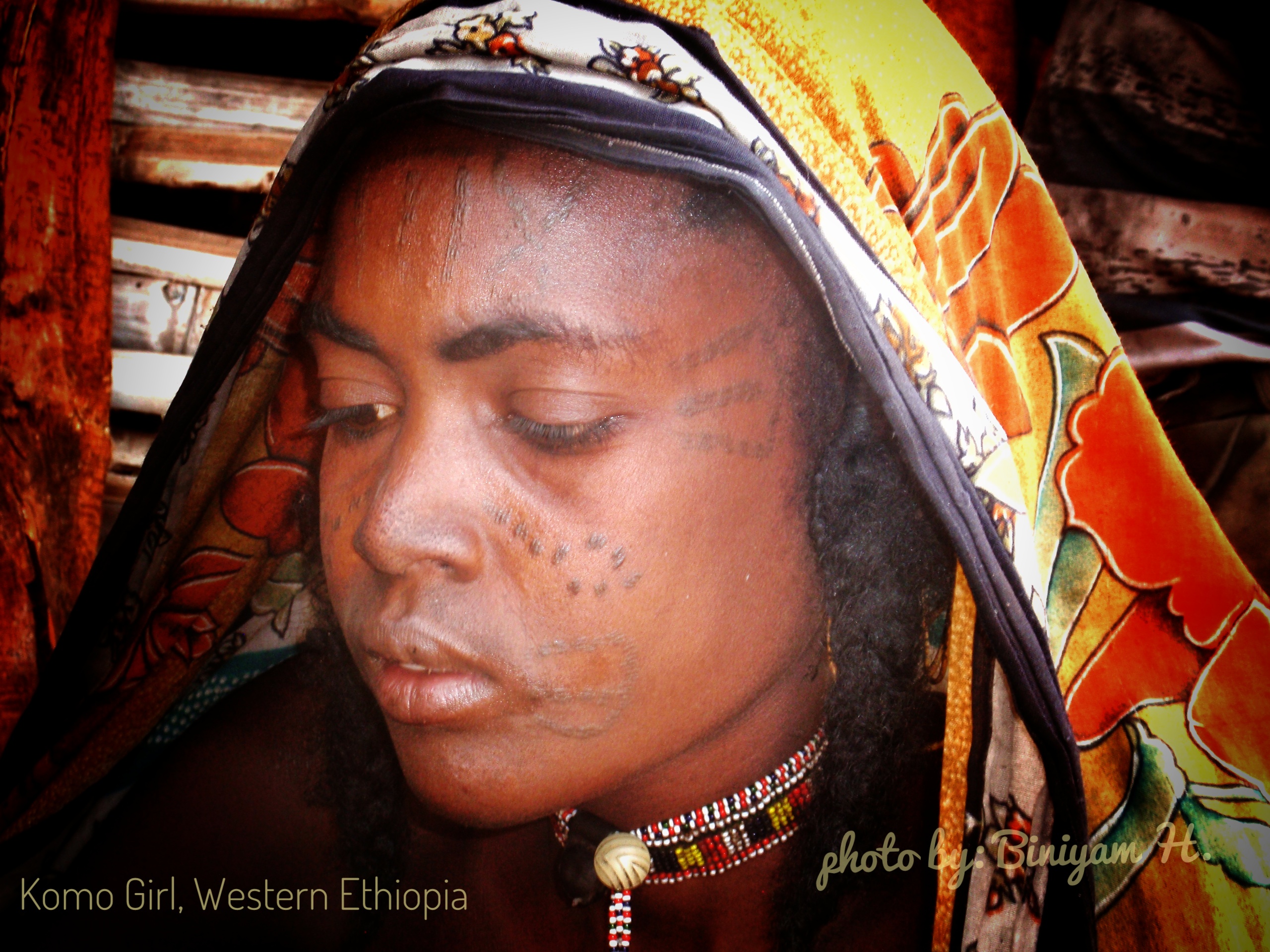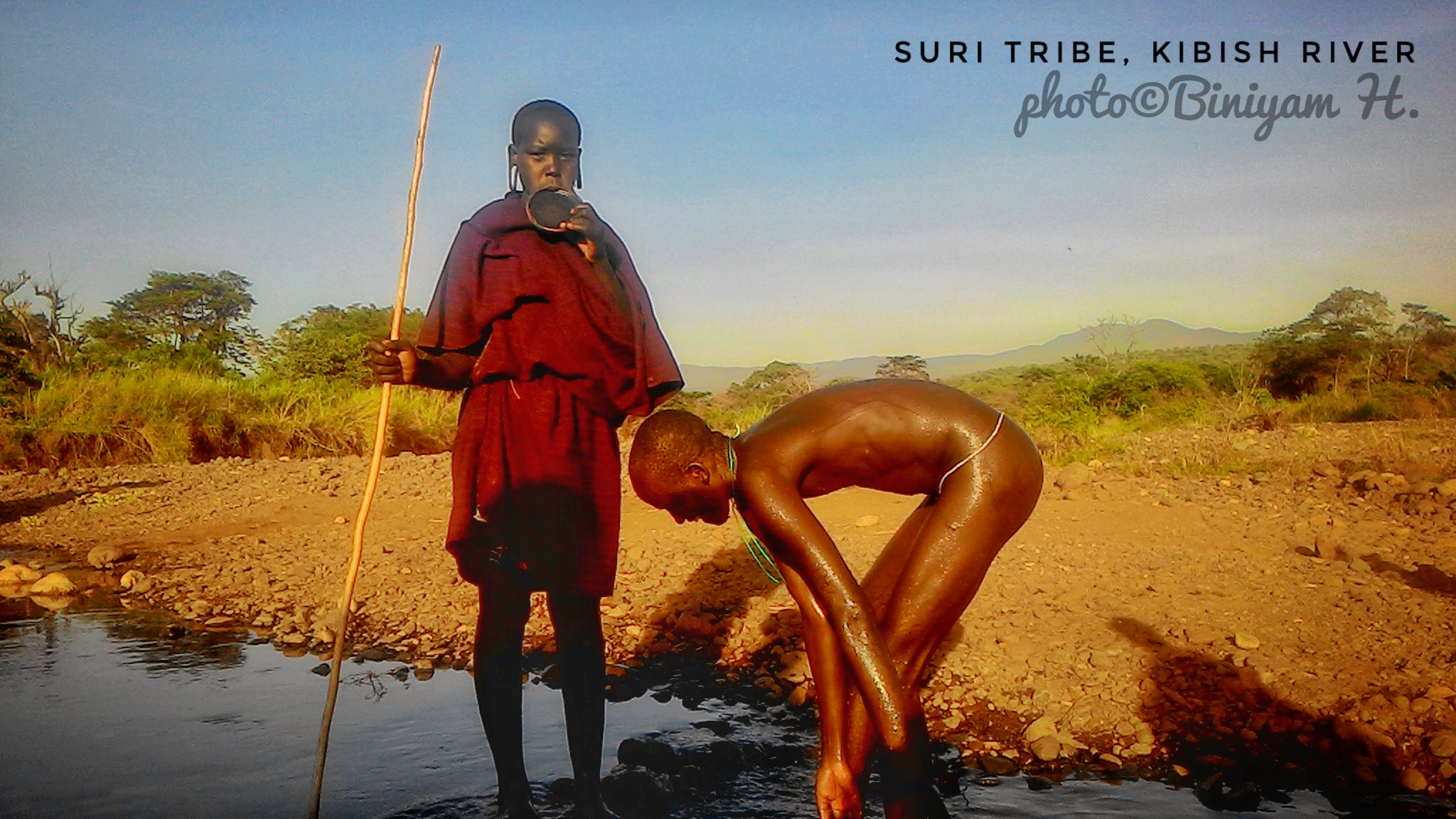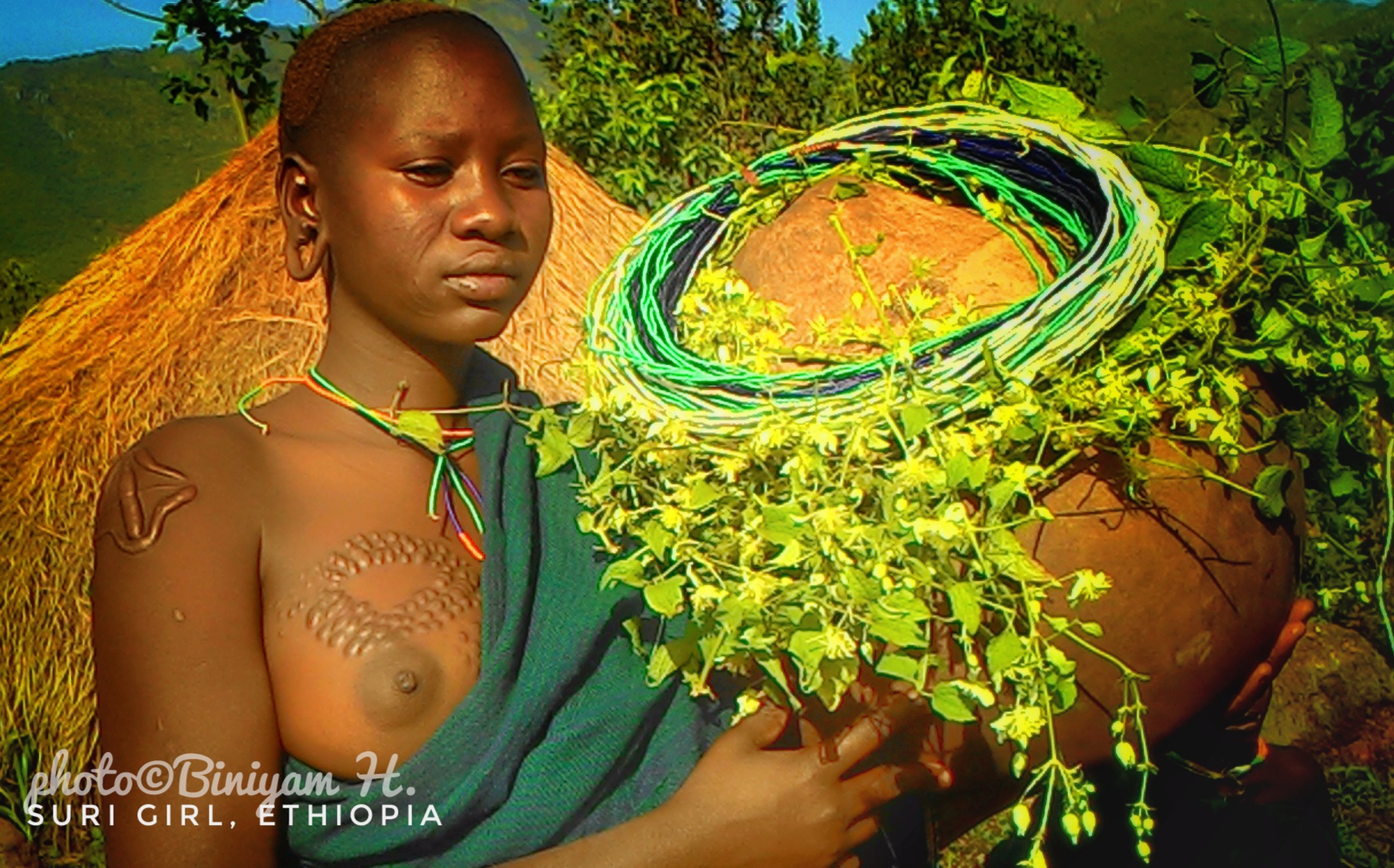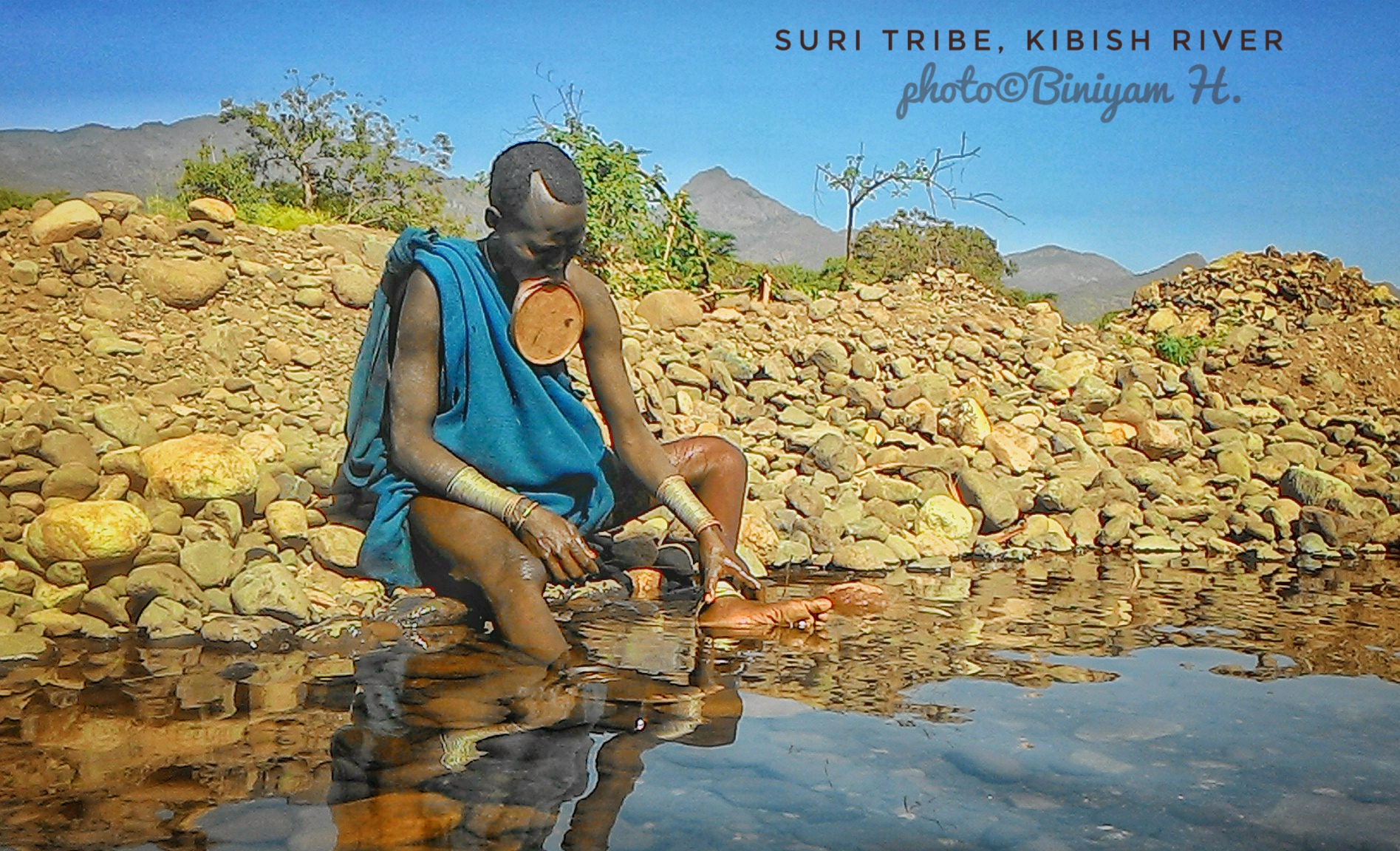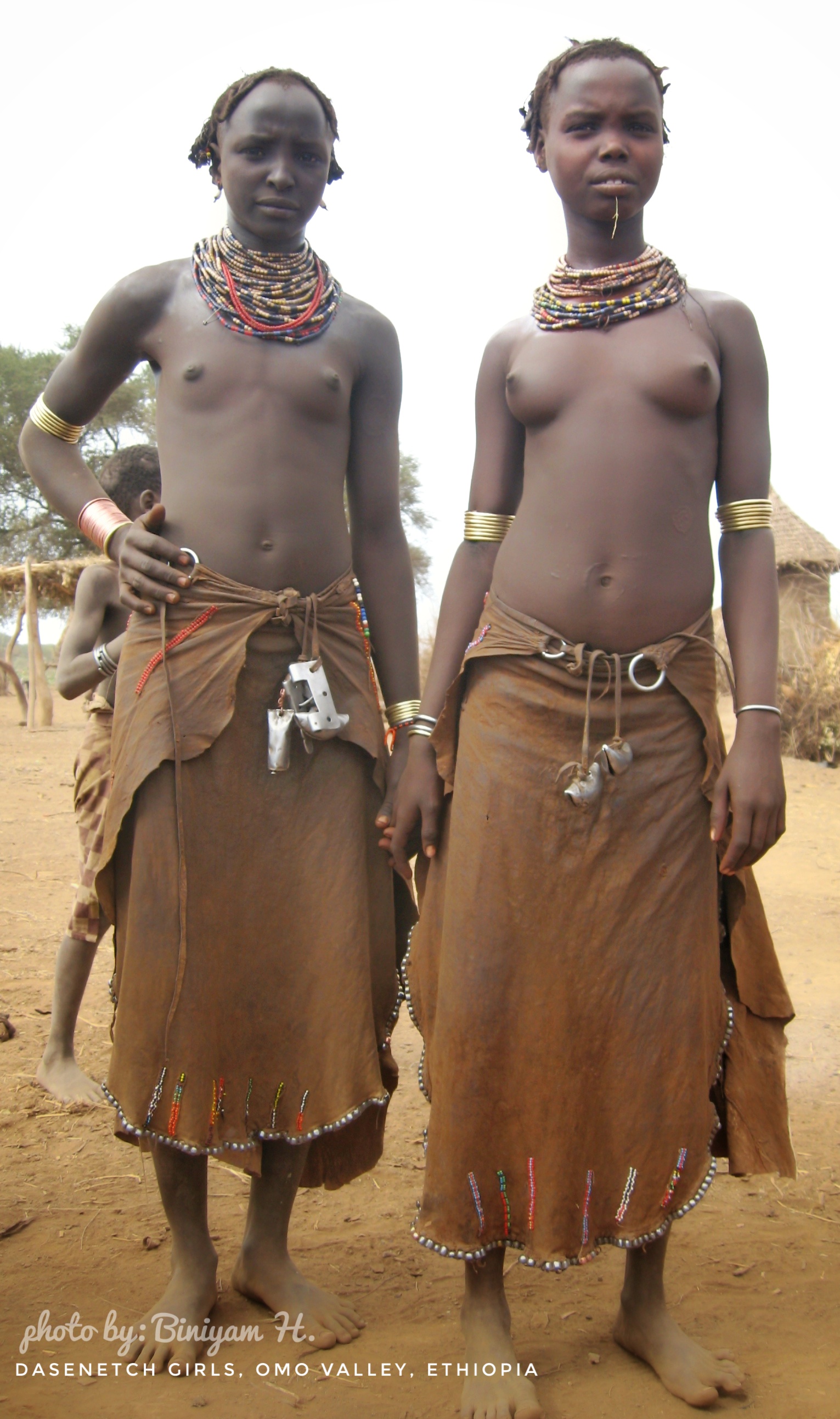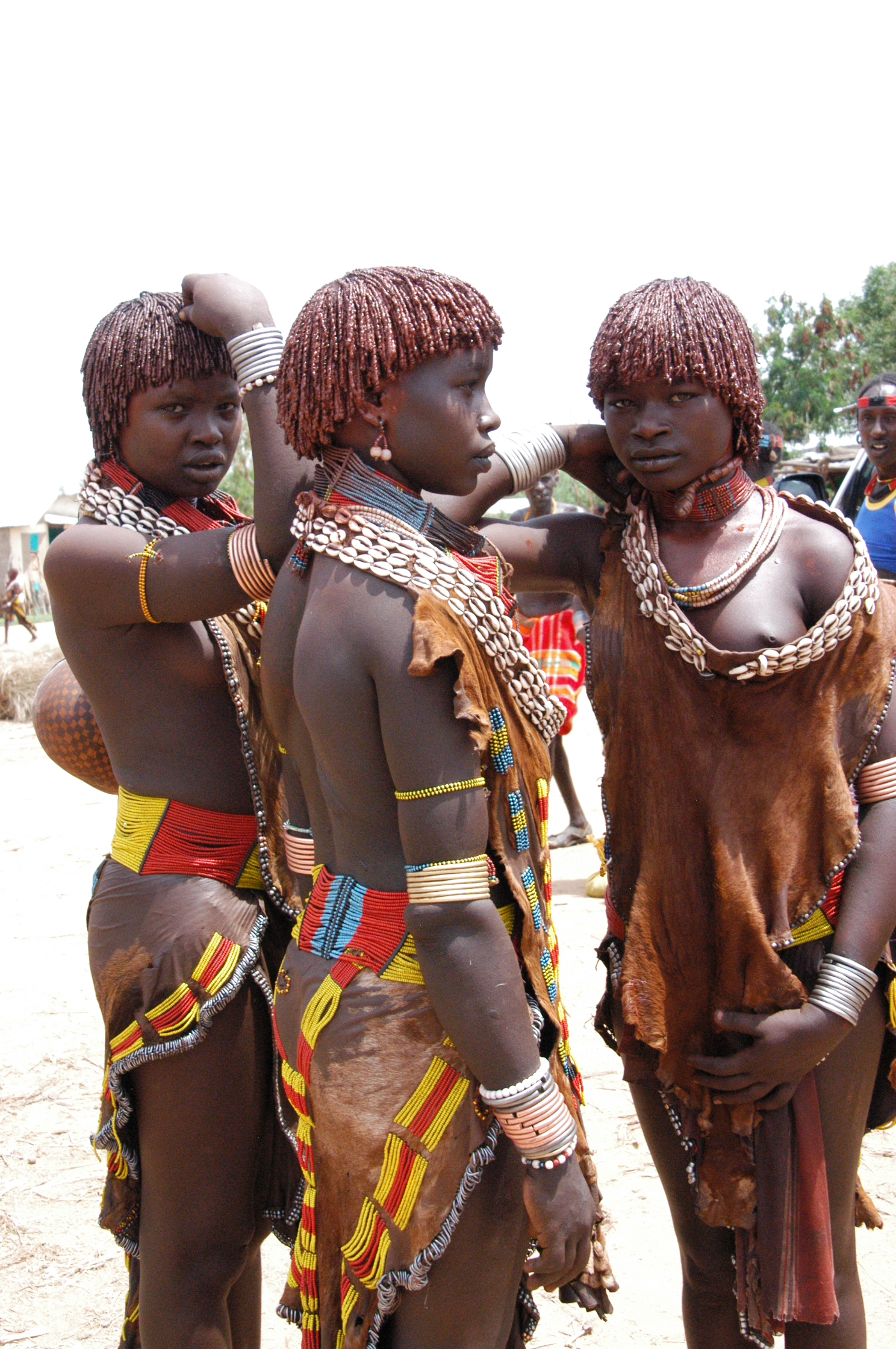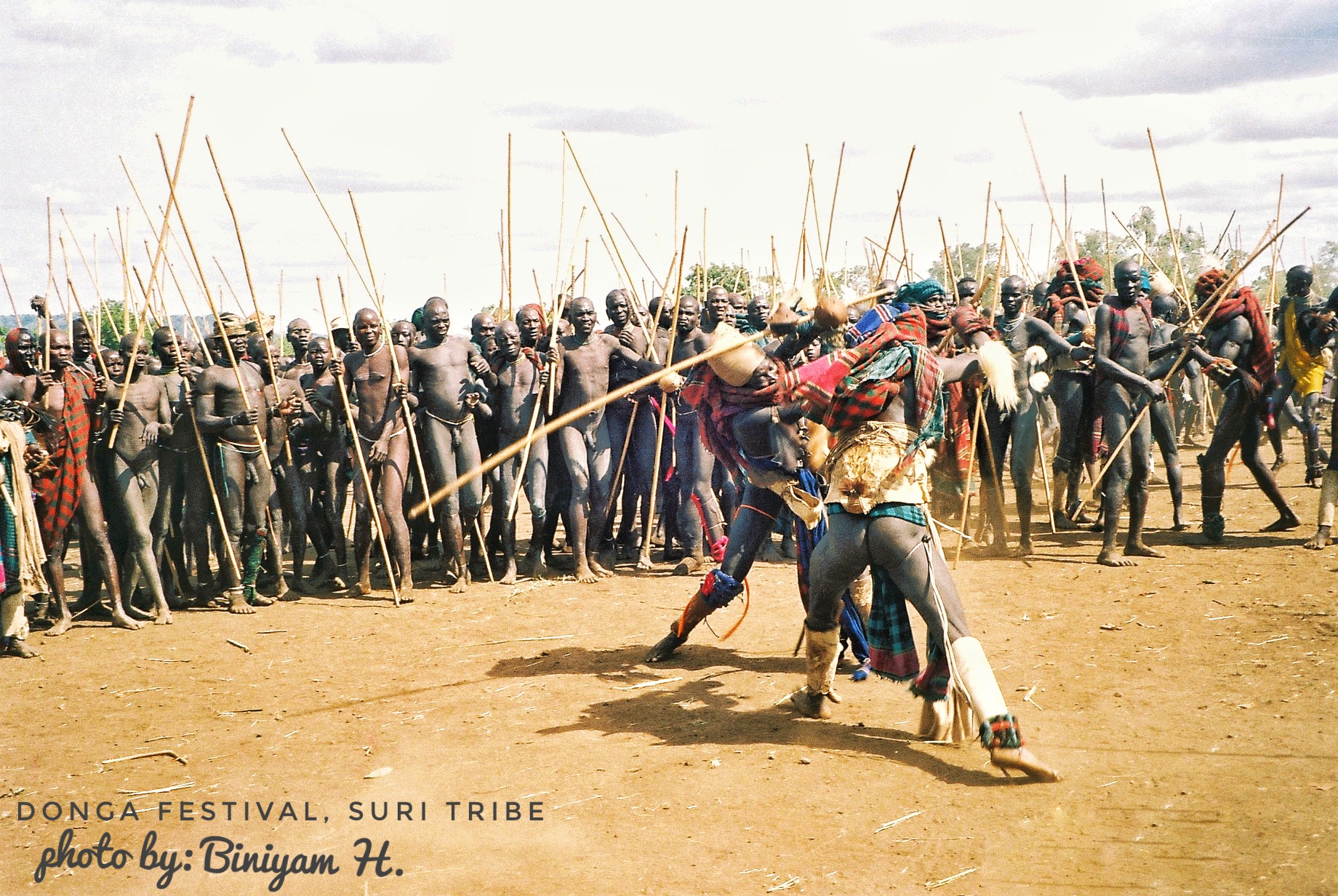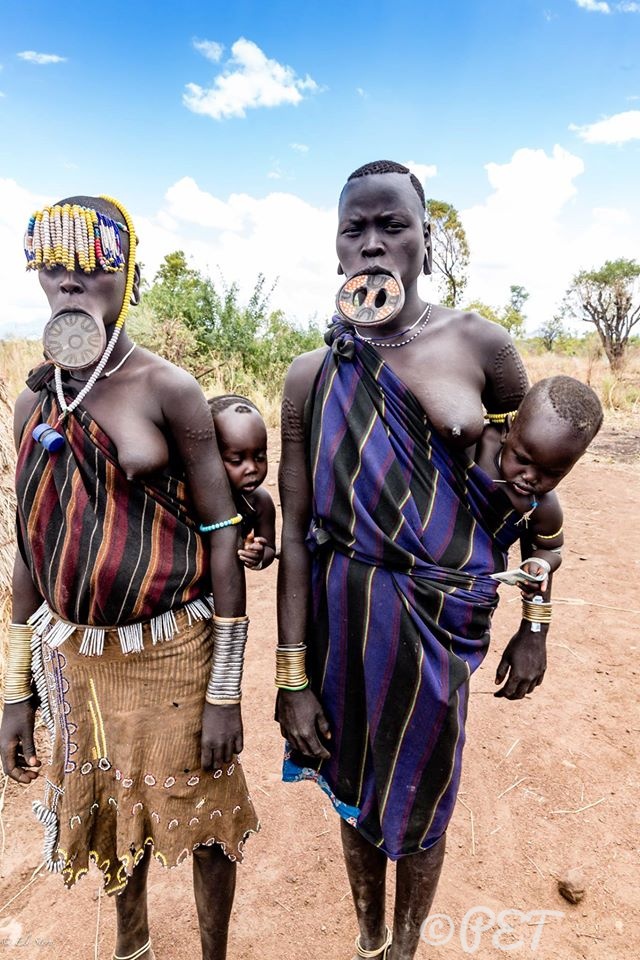Culture
Also known as Bume, the Nyangatom belong to the Nilo-Saharan linguistic group. They live throughout the eastern part of the Lower Omo Valley and the Kibish Basin, even into Sudan. Closely related to the Topossa people of Sudan, they shun conflict with these neighbours. Both peoples seem to have a common origin-northeast Uganda. Pressure from the Turkana may have displaced the Topossa to the southeast Sudan and the Nyangatom towards Kibish. Part of the Nyangatom established themselves on the bank of the Omo River and abandoned their livestock due to problems with the tsetse fly. They formed a stationary nucleus, subsisting mainly on agriculture and some fishing. The larger group remained in the west, and continued in traditional semi-nomadic herding.
There are two groups within the Nyangatom: the western group around the Kibish Basin where herding and some agriculture are combined, and the eastern group around the banks of the Omo, with permanent settlements dedicated to agriculture (sorghum and corn). Weekly markets enable the flow of goods between the Nyangatom and their neighbours in times of peace.
The Nyangatom have grown in numbers to about 7,000 individuals. Their attempts at expansion in the last few years have caused continual confrontations with their traditional enemies, the Mursi, the Surma, the Karo, and the Dassanetch. Their proximity to Southern Sudan has made it easy for them to acquire arms, and since the 1970s, confrontations have claimed a large number of victims. The government has intervened to re-establish peace in the area, but demographic pressure and terrible existence.
Ornamentation of the women is designed not only for beauty, but also to assert the woman’s social status. The number, colour, declaration. In addition, both men and women have labial piercing with different metal, wood, or ivory decorations. Men sometimes wear sharp metal rings and bracelets as personal defensive weapons. One bracelet is particularly intimidating- it is a disc shape with filed edges.
As in all the other tribes of Ethiopia, from the appearance of a Nyangatom woman, one can learn a lot about her social status, her place in the society. Look at the girl…the Nyangatom tribe women wear a lot of different beads on their necks, which they never ever take off. As a young girl, she gets her first strand of beads as a gift from her father and for all the years of her life she adds more and more. Sometimes you can see a woman who wears up to 6-8Kg of beads.
Married and unmarried woman: their skirts will give you much more accurate and truthful answer. The Skirt of unmarried women is made of goat skin, will be cleaned of lint, and it will always be embroidered with the bright beads. Married women’s skirt is always less bright, and not embroidered with multicolored beads. And, accordingly, the number of the bead threads on her neck is higher.
Continuous confrontations with their neighbous explain why Nyangatom men have so many scars. One ceremony honours the courageous warriors with a sacrifice of goats, and the infliction of scars on their shoulders, chest, and backs.

